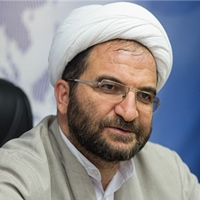A critical analysis of the reflection of prophetic traditions of Mahdi's lineage in Fariqin sources up to the 7th century
The efforts of scholars and historians to record Mahdawi reports from the third century until now have provided us with a precious treasure of Mahdawi hadiths. How Mahdavi news was written was influenced by the political and cultural conditions of the time and the author's thoughts. Representation of the influence of beliefs and intellectual tendencies in the reflection of Mahdavi news of Mahdi's lineage until the 7th century, using narrative, historical and interpretive sources, is the aim of the upcoming research. The current research method is descriptive-analytical with a historical approach. The Mahdavi hadiths of Mahdi's lineage under seven types had a wide reflection in Shia and Sunni sources. The result of the total hadiths of the Shia sources of twelve imams is that Imam Mahdi (a.s.) is a descendant of the Messenger of God (a.s.), Ali (a.s.) and Fatima (a.s.), and his father is the ninth descendant of Imam Hussain (a.s.), namely Imam Hassan Askari (a.s.). Sunni sources and some non-Twelve Imami sects consider Mahdi (as) as one of the Ahl al-Bayt. According to the expansion of the meaning of Ahl al-Bayt (pbuh), which includes a person from the descendants of the Messenger of God (pbuh) through Fatima (pbuh) or a person from the family of Ali (pbuh), the family of Aqeel, the family of Jafar and the family of Abbas, the Promised Mahdi (pbuh) , not necessarily Muhammad ibn al-Hasan al-Askari.
-
A Typology of Traditional Islam in terms of Constant and Variable Elements of Religion
Seyed Ali Bathaei *, Mehdi Farmanian, Ebrahim Qasemi
Pajouheshname - ye - Mazaheb - e - Eslami, -
A critical rereading of Tabatabai's Madrasi point of view regarding the place of debate in the first centuries of Imamia
Mogtba Moradimaki *, Safdar Rajabzadeh, Mehdi Farmanian
Journal of Kalam Pajouhi,



